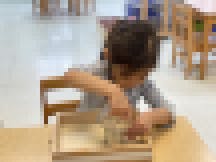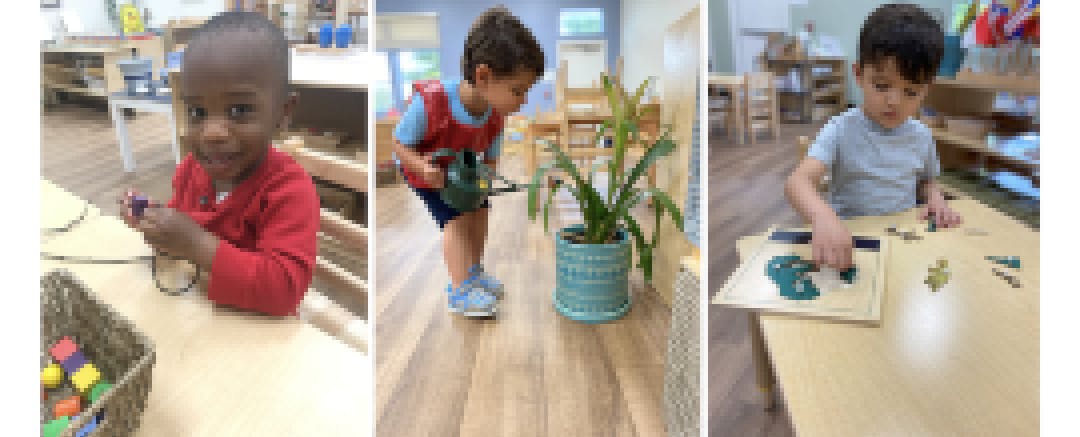Across the country, in virtually every city and state, businesses have shut their doors and sent workers home, awaiting word on when it’s safe to reopen. The same is true for schools and colleges, most of which have been closed since March.
In fact, it’s the reality for all but a handful of industries that are deemed “essential,” including health care professionals, food service workers and first responders.
That still amounts to millions of essential workers. And many of them have young children. How are they supposed to go to work—to the hospital to care for COVID-19 patients, to the fire department to respond to emergency calls, to the grocery store to restock the shelves—and do their jobs effectively with kids at home and no one to watch them?
This is a question that has been on the minds of many early childhood program operators. So much so that, as the weeks have passed and closures persisted, some child care centers have reconsidered their decision to shut down, despite all the risks that come with opening up.
“With doctors and nurses, you want them not only physically present to do their jobs, but emotionally present, and they can’t do that if they’re worried about their 2- or 3-year-old,” explains Ray Girn, the CEO of Higher Ground Education and founder of Guidepost Montessori, a network of about 50 Montessori schools with locations across the United States and a few overseas.
Girn is among the leaders in early childhood education who reassessed his organization’s initial decision to close down its centers. Other programs, such as many local YMCAs as well as Bright Horizons’ centers in Seattle, Detroit and Washington, D.C., are also now open to “those on the frontlines of the fight against COVID-19.”
Recognizing the need
Much like the rest of the country, many Guidepost Montessori schools, which serve a combined 3,500 families, closed down the week of March 16, when cases of the novel coronavirus began to rise in the U.S. The rest of its sites followed suit the subsequent week.
For its students, Guidepost began implementing distance learning, which the organization had been preparing for since February. (Girn says the network’s three schools in China gave them early insight into what might be in store for the rest of the world.)
But during the week of March 23, when the last few sites were closing and staff were trying to get their remote learning plans off the ground, Guidepost was getting “pinged over and over by doctors, nurses, health care workers saying, ‘My child’s school is closed. Do you have anything?’” Girn recalls.
He came to the conclusion that, because essential workers needed child care, child care had also become essential. That same week, Guidepost repurposed one of its sites, in Southern California, to serve the children of essential workers. Within a matter of days, the staff fielded so much demand that they decided to open other locations.
“There was an overwhelming desire to participate, a deep need to be part of the solution,” Girn says of his staff. “We were very mindful and thoughtful of the risks.”
Meeting the need
By the next week, Girn says, Guidepost went from reopening a center here and there based on need, to repurposing every site across the network. Those sites serve children from eight weeks to 12 years old.

The staff recognized that essential workers, especially those directly involved in the COVID-19 pandemic, needed a safe place to send their children. But they also saw that the children needed a safe place to go. “Part of what was motivating staff and motivating me is what our children need psychologically, not just that they need someone to babysit them,” Girn says. “They obviously need attention, care and love. But they also need to be engaged. They have deep needs for engagement, concentration and routine.”
He adds: “We felt we understood that and wanted to model that for the country.”

Each state has its own definition for what constitutes an “essential” worker, and Guidepost uses that definition to determine whose children are permitted to attend its child care centers. And then within that, Girn says, the organization prioritizes the families of nurses, doctors, emergency medical staff and first responders before those working in industries such as food and agriculture, engineering, IT and military.
During ordinary circumstances, Guidepost offers the full educational approach inspired by Maria Montessori, in which self-directed activity, free expression and collaboration are front and center. Some of those elements will still be woven in, Girn says, but they are making some compromises and being realistic about what’s achievable during this unique period.

So far, the sites have been “inundated” with requests from essential workers, Girn says, and as a result Guidepost is preparing to establish pop-up child care centers within hospitals and other medical centers. According to a company spokesperson, several hospitals are currently in the final stages of planning on-site partnerships for child care.
The staff who work with children at the centers are there voluntarily, Girn emphasizes. Guidepost is trying to take advantage of all funding opportunities, including from the federal stimulus package, to continue paying educators their full salaries. That support is necessary, especially since the centers are not charging families full tuition rates—about 25 percent less than normal, Girn says.
Weighing ‘considerable challenges’
At Educare, a network that oversees 24 independently operated child care centers serving children from birth to age 5, the decision to close or remain open was left up to individual site leaders.
By late March, all 24 sites had made the decision to close, says Andrea Pearson, director of Educare Practice at the Ounce of Prevention Fund, a nonprofit that provides and advocates for quality early learning for children under age 5 and developed the first Educare school in Chicago in 2000. But a handful of them have received requests from their communities to reopen for essential workers. “It’s a decision I think that each of the schools is examining on a weekly, almost daily, basis,” Pearon says.
And it is not a decision that any operator makes lightly. “There are considerable challenges,” Pearson adds. The leaders of each center are “really weighing both the benefits to their families and the community that reopening can provide, but also recognizing the risks that congregate care has.” She specifically noted the distancing and disinfection guidelines from the Centers for Disease Control and Prevention as a hurdle to reopening.
So far, one Educare center has determined that the benefits outweigh the risks. The Seattle location reopened earlier in April, and is serving existing students whose families include essential workers. It is not, at this time, accepting children who were not previously enrolled.
Both Educare and Guidepost have taken safety and sanitation precautions very seriously, officials say.
Similar to Guidepost, those who returned to work in the reopened Educare Seattle center are doing so voluntarily. Staff who are considered vulnerable, or live with immune-compromised individuals, have been urged to weigh the decision carefully.
At Educare, preschool class sizes have shrunk from a ratio of 17 children to three adults, to now eight children for every two teachers. Following social distancing guidelines, children do not shift rooms throughout the day, and only one class is permitted on the playground at a time. Families who have exhibited any symptoms of COVID-19—cough, fever, shortness of breath—know not to send their child to the center, and Educare is using a no-touch thermometer to screen families’ temperatures from their cars.
At Guidepost, individual classes of students are kept separate from one another, parents wait outside to drop off and retrieve their children, and both children’s and parents’ temperatures are taken daily.
“Child care is an odd candidate to be a mission-critical sector in a global pandemic,” Girn says, “But it is. This moment calls for that.”
Update 4/23/2020: An earlier version of this story referred to the Montessori school network as Higher Ground Montessori. In fact, Higher Ground Education is the parent company overseeing Guidepost Montessori schools.


